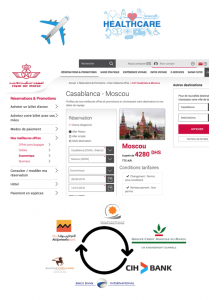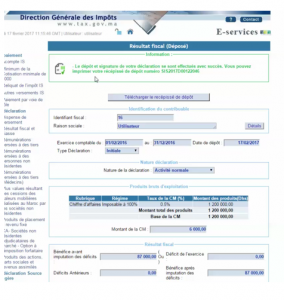
In 2013, IBM conducted the Academy of Technology initiative in which IBM reviewed the end-to-end aspects of continuous availability (governance, technological advancements, architectural patterns, design and operational practices).IBM identified specific business requirements that mandate continuous availability and also found organizations that have continuous availability as part of their DNA.
![]() PowerM Solution : Continuous availability Services
PowerM Solution : Continuous availability Services
1. Always On: Business Considerations for Continuous Availability :
In 2013, IBM conducted the Academy of Technology initiative in which IBM reviewed the end-to-end aspects of continuous availability (governance, technological advancements, architectural patterns, design and operational practices).( (*) Always On: Business Considerations for Continuous Availability IBM REDP5090)
IBM identified specific business requirements that mandate continuous availability and also found organizations that have continuous availability as part of their DNA.
However, most organizations have invested in high availability or disaster recovery but not in continuous availability. For these organizations, continuous availability might not be a requirement today, but as we increasingly depend on IT, it becomes a critical success factor.
Managers of organizations might not know the precise exposure per hour of an outage, but they have a good idea of what the business would lose for each hour of an outage. They can also quantify the cost of continuous availability as a resiliency solution. By combining these two pieces of data, they can determine when continuous availability makes sense – when the value of continuous availability is greater than the cost
2. What Continuous Availability Means to your Business
- High availability (HA) and disaster recovery (DR) are relatively mature approaches that are typically well-known even by non-technical people. Continuous availability is not as mature and can be confused with HA or DR. People still think in terms of “how many 9s” they can achieve (99.99% uptime, for example). But that is an HA topic. This is a challenge for continuous availability :
Need common terminology to be able to have a conversation with the different stakeholders,
Need to start by defining what continuous availability means.
3. Unique Continuous Availability Requirements
Loss of life :
Businesses in certain industries have regulations or requirements that mandate continuous availability.
There are situations where lack of continuous availability results in significant injuries or loss of life.
Exceptional client experiences :
We realized that companies with people who take continuous availability seriously are companies where people care deeply about their customers’ experiences. For these companies, client experience is not an afterthought. These companies have transformed their businesses to serve their clients better.
Industry-specific regulations:
New regulatory, scheduling, and business requirements are increasing the need for continuous availability.
Financial institutions need stringent high availability on certain days or at certain times of the day, especially for scheduled time windows where money needs to be transferred between banks. A missed window can adversely affect other businesses and result in loss of interest income or an increase in interest paid.

4. Continuous Availability Business Incentives
Raised expectations in a mobile and hyper-connected world :
Mobile devices are predominant across most of the globe. People constantly use their smartphones or tablets at home, at work, while commuting, or during Morocco 2 – 2 Spain match. People have the device at hand, and they expect the applications that they use with that device to be available whenever they want to access them.
No time for visible planned outages in a flat world:
There is an increasing demand to provide continuous service and to avoid unplanned outages. Also, the tolerance for visible planned outages is decreasing to the point where many businesses no longer have any planned maintenance windows that interrupt normal service. This is true for business-to-business, business-to-consumer, and even business-to-employee services.
This shrinking or elimination of the maintenance window puts pressure on people, processes, and technologies to support concurrent upgrades and concurrent maintenance.
Reputation damage in a social network world :
People expect always on, regardless of published SLAs. When customers try to use a business application, and the business application is not available, these clients become dissatisfied. When they are dissatisfied, they tell their friends on social networks.
Increased availability demands from real-time analytics :
Big data analytics is another huge driver in today’s enterprise initiatives. We believe that the main driver for continuous availability is not so much the increased volume of data, because most of the data still does not need to be continuously available. Is the velocity of the data. The data flows so fast that even a short outage has significant effects.

5. Continuous Availability Inhibitors
Quantifying the cost of services not being continuously available :
Even as the demand for continuous availability increases, it is still difficult for our clients to justify the expense of implementing continuously available systems and procedures. General figures can be quoted, but applying this to individual business applications is difficult, still.
Confusing continuous availability with high availability or disaster recovery :
To justify the cost of continuous availability, a measurable impact on the business must be calculated. But often, as soon as the outage is past or if a data center has been fairly stable, the business side forgets the critical need for continuous availability until the next outage occurs.
Heterogeneous end-to-end view :
Outages are not caused only by technology (failed hardware, software bugs, and so on). End-to-end continuous availability also includes business architecture, operations, process, and support organizations.
Poor communication between business and IT:
Even when continuous availability for a particular business is a requirement, the recognition of that need is frequently triggered by an unplanned outage. Often, the business managers seem surprised that the outage and resulting loss of service occurred.
There can be a disconnect between business and IT, where business promises continuous availability to its clients even without mentioning “continuous availability
Ownership and funding:
Along with this communication, there is a need to determine who “owns” continuous availability and who pays for it.
5. Addressing the Cost Challenge
Being realistic about the cost of continuous availability:
The cost of implementing continuous availability initiatives can create a high hurdle (especially the geographically dispersed Active-Active approach, sometimes called Active-Active-Active or 3-Active).
At the same time, we observed organizations with unrealistic expectations about implementing continuous availability “on the cheap,” given the low price of commodity hardware. Simply throwing hardware at the problem and building a custom solution is a recipe for high maintenance and unattainable SLAs.
The reality is that continuous availability is much more than just hardware and software. The facility costs and resource requirements greatly exceed the initial implementation costs. As a result, continuous availability needs to be viewed in terms of total cost of ownership (TCO), and it must be cost-justified based on the inherent risks of not providing continuous availability.
Although many believe that cost of the 3-Active approach is exorbitant, that is an invalid analysis for any organization that manages an unused DR site. Many organizations that implement DR without using this capacity can optimize their approach in terms of both cost and resiliency by adopting a 3-Active architecture to optimize continuous availability, with a focus on balancing absolute data consistency requirements with eventual data consistency patterns.
Assessing the business impact of unavailability:
Various methods are used to quantify the cost of an outage (lost sales, fines from a regulator, or others). However, quantifying the cost of not providing continuous availability has not been a strong enough incentive for organizations to adopt continuous availability.
Compare the business strategies and business plans for the next 12 – 18 months with the IT strategies and plans.
The business strategy and business plans will mandate specific continuous availability capabilities, especially for organizations that are compelled by their marketing, sales, and support organizations to emphasize the quality of their customers’ experiences as a primary benefit.
A continuous availability conversation with the CFO:
Arguably, chief financial officers have become one of the most critical contacts within a business.
CFOs now have a broader scope of responsibilities: cash flow, company liabilities, overall business performance, financial relations and obligations, and much more.
Crucial conversations must be initiated at the CFO level to appeal to the business aspects of supporting or not supporting continuous availability for those applications that warrant the highest level of availability. With the responsibilities held by today’s CFOs, it is advisable to make an appeal that is based on the business consequences of not investing in continuous availability.
A continuous availability conversation with the CMO:
In our experience with clients, we are seeing many initiatives being driven from the office of the chief marketing officer. The CMO has money.
We believe that the nature of the initiatives that are driven by the CMO in the next few years will require continuous availability.
To increase administrators’ appreciation and understanding of the IT implications of achieving goals that make continuous availability necessary, we recommend a tighter connection between the chief marketing officer and the chief information officer.
6. Reference :
Always On: Business Considerations for Continuous Availability IBM REDP5090


